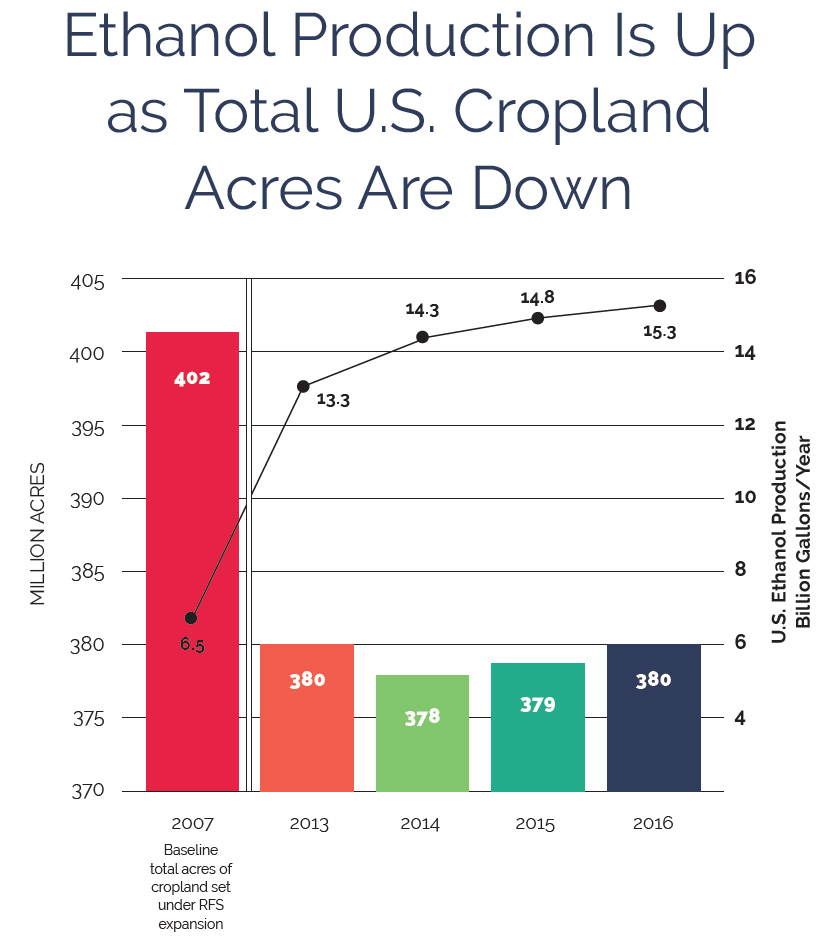QUESTION
Has increased ethanol production in the U.S. negatively influenced the number of acres set aside for soil and wildlife conservation?
ANSWER
No, cropland is not increasing because of increased ethanol production. Recent data from the Environmental Protection Agency (EPA) and the United States Department of Agriculture (USDA) indicate that the Renewable Fuel Standard, or RFS, and ethanol have not led to farmland expansion.
The EPA estimates that the acres of total cropland in the U.S. have dropped from 402 million acres in 2007 (when the RFS was expanded) to 380 million in 2016. The total cropland in the U.S. has stayed fairly constant the past four years, showing that the buildout of the ethanol industry is not changing the total acreage of cropland.
Furthermore, farmers are using emerging technologies to plant more corn per acre on existing cropland, while generally leaving an ample amount of corn stover — stalks, leaves and cobs that remain in the field after the corn harvest — to help replenish nutrients to the land and aid in wildlife cover. 2016 was the third straight year of record corn production.
Between 1980 and 2011, the amount of land required to produce one bushel of corn fell by 30 percent, soil loss fell by 67 percent, water for irrigation fell by 53 percent, and energy use fell by 44 percent, according to a National Indicators Report by Field to Market that uses calculations from the USDA.
Furthermore, corn that is produced for ethanol also yields the coproduct DDGS, or dried distillers grains, from the distillation process. This coproduct is used to feed livestock in place of corn and reduces the amount of land used for feed.
Any land conversions that are taking place are due to other factors, such as limited funds for the USDA’s Conservation Reserve Program (CRP), which has a goal to protect and restore the natural environment. Through CRP, the USDA helps farmers counterbalance the costs of restoring, enhancing and protecting certain grasses, shrubs and trees that improve water quality, prevent soil erosion and strengthen wildlife habitat.
Funding from the CRP Program is in high demand by farmers and ranchers who are interested in letting their land lie fallow. But over the course of the budget process over recent years, CRP funding has been significantly curtailed.
POET has expressed support for expanding CRP funding for this purpose.
Based on data provided by the United States Department of Agriculture, the Environmental Protection Agency estimates that the acres of total cropland in the U.S. has not exceeded the original, or baseline, acreage that was set in 2007, when the Renewable Fuel Standard was expanded. The total cropland in the U.S. has stayed fairly constant the past four years, showing that the buildout of the ethanol industry is not changing the total acreage of cropland.







